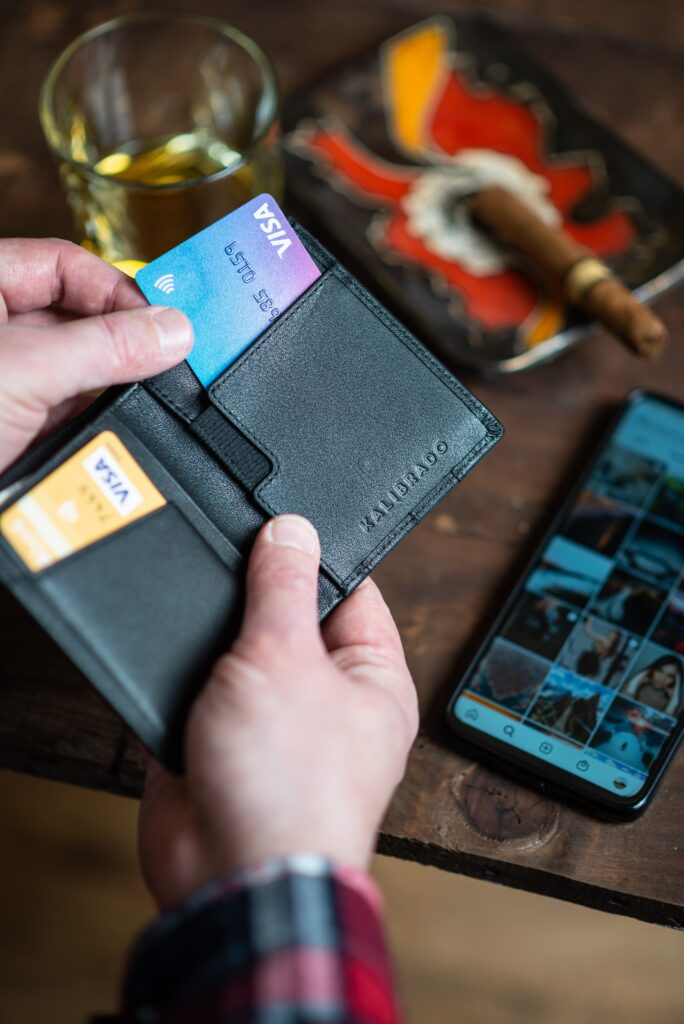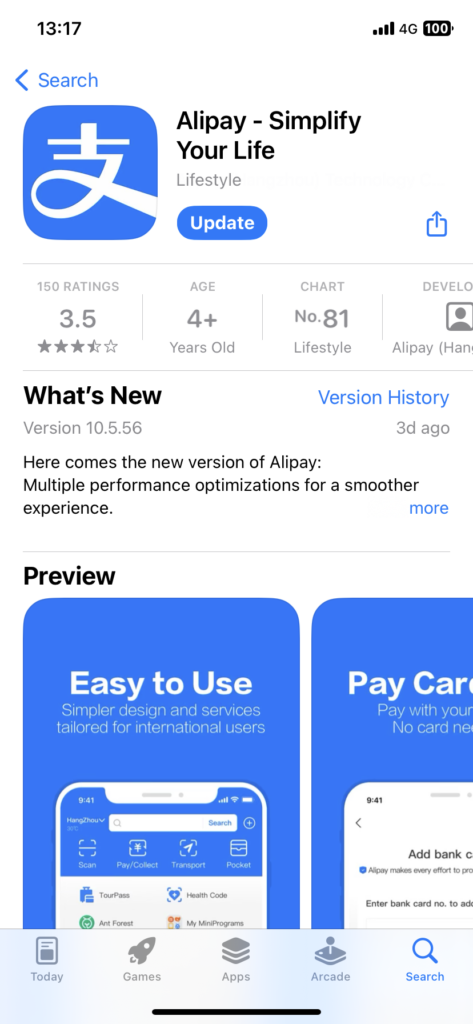
There are three options: Cash, Credit card or Digital payment apps.
Cash

I was told that cash would be almost dead and that most shops don’t really use it anymore. I wanted to put this to the test! Here’s what I found out: After 2 months I have realized that in every shop, every restaurant, every convenience store, fast food stand, hotel, rural villages in Yunnan (more on it on future posts), and so on, no one ever pays with cash. This doesn’t mean you can’t. In the hospital, to buy tickets at a metro station or other facilities: it is possible, and I have seen it. But, in general, even in the most rural villages in the mountains (Dong Autonomous Prefecture), you were able to pay with Alipay and WeChat Pay.
Credit card

Credit cards (Visa or Mastercard) are generally accepted in big stores, hotels, and some applications. There is for instance Trip.com, an application, where you can buy train tickets, book hotels and more with your credit card. (see my post about must have apps). In addition, Apple Pay is also used in big cities. However, if you go to a restaurant, want to take a taxi, go to the metro, smaller shops, hairdresser and so on, you can’t pay with credit card.
Apple Pay is available in China, so that works sometimes.
Digital payment apps

I am being honest here, you need Alipay, if you stay longer in China. Maybe you can get along in Beijing with Cash and Credit Card, but other than that, never ever!
Applications are the most popular way to pay because it’s easy and quick. The two applications are either WeChat (Tencent) or Alipay (Alibaba). After my quick summary, I will explain in detail the two apps in relation to paying for something.
My quick summary:
WeChat, a versatile app widely used in China, offers a seamless sign-up process via phone number and SMS. Much like WhatsApp, it supports chatting and facilitates text translation within conversations. Additionally, it features a social media-like platform for sharing posts and incorporates WeChat Pay, allowing users to link their credit cards for transactions, but with occasional difficulties in registration.
While WeChat serves well for tourists with its messaging features, Alipay stands out as a payment-focused platform. Alipay streamlines payments via QR codes, making transactions effortless. However, both WeChat and Alipay charge a 3% processing fee for transactions above 200 yuan, which might be considerable, especially when combined with credit card fees. What I do at a merchant: I split up my bill to 199 yuan multiple times and it works.
In summary, WeChat resembles WhatsApp, catering to tourists with its chat functionalities, whereas Alipay excels in simplifying payments through QR codes. Nonetheless, the 3% processing fee for transactions over 200 yuan remains a notable downside in both apps, impacting larger transactions with additional charges. But you can’t change that.
(I told ChatGPT by voice my opinion, and it summarized my thought. What do you think?)
My story:
Well, there was one little problem: I couldn’t pay for my SIM card with WeChat or Alipay. I could, however, send money to my girlfriend in China. It worked fine with 1 yuan and 100 yuan (about $12), but when I tried to send her 200 yuan (to buy a Chinese sim card), the bank blocked her credit card and she had to go to a bank branch in person with her ID and documents. So yes, they were quite strict, and we decided not to send any more money. (Which is a bit strange, but maybe the automated system suspected money laundering?)
In the end, her card was cancelled, and she also had to buy a new phone number, since everything is linked to a number in China, even her Bank, and that was it. A bit extreme, right?
But, sending money with the Qr-code to firms or businesses worked well, and that is important.
